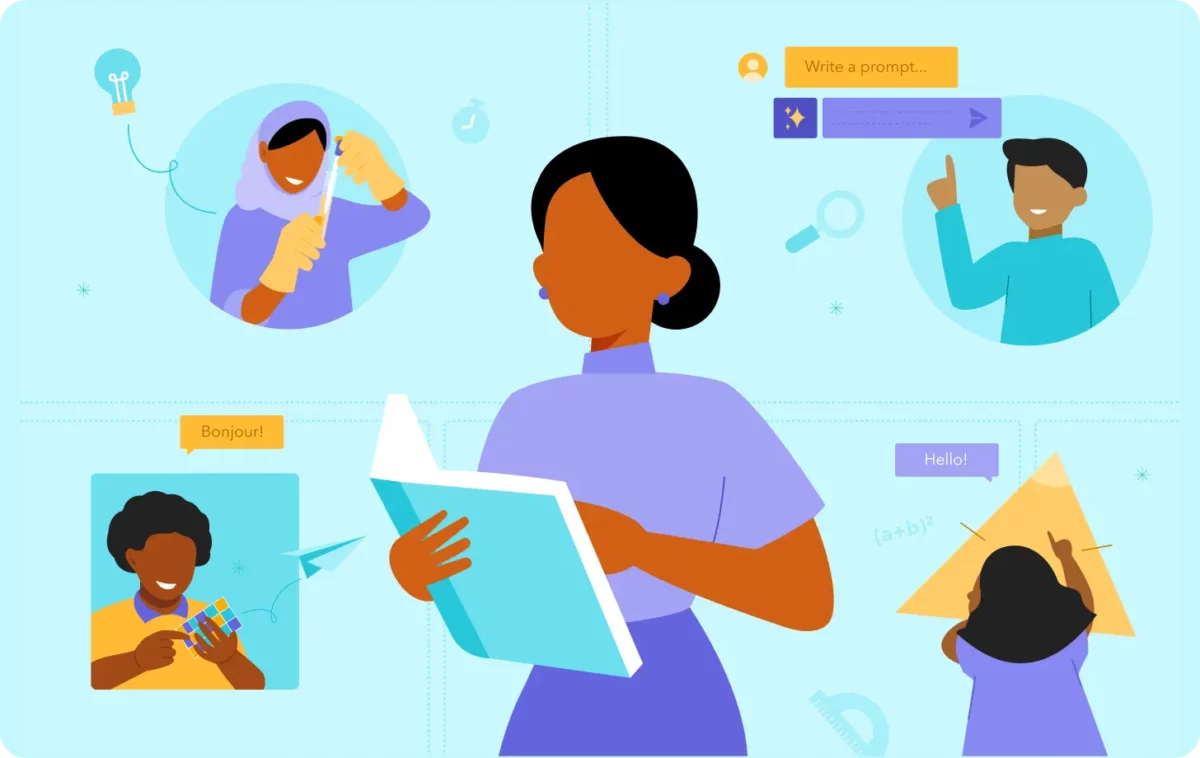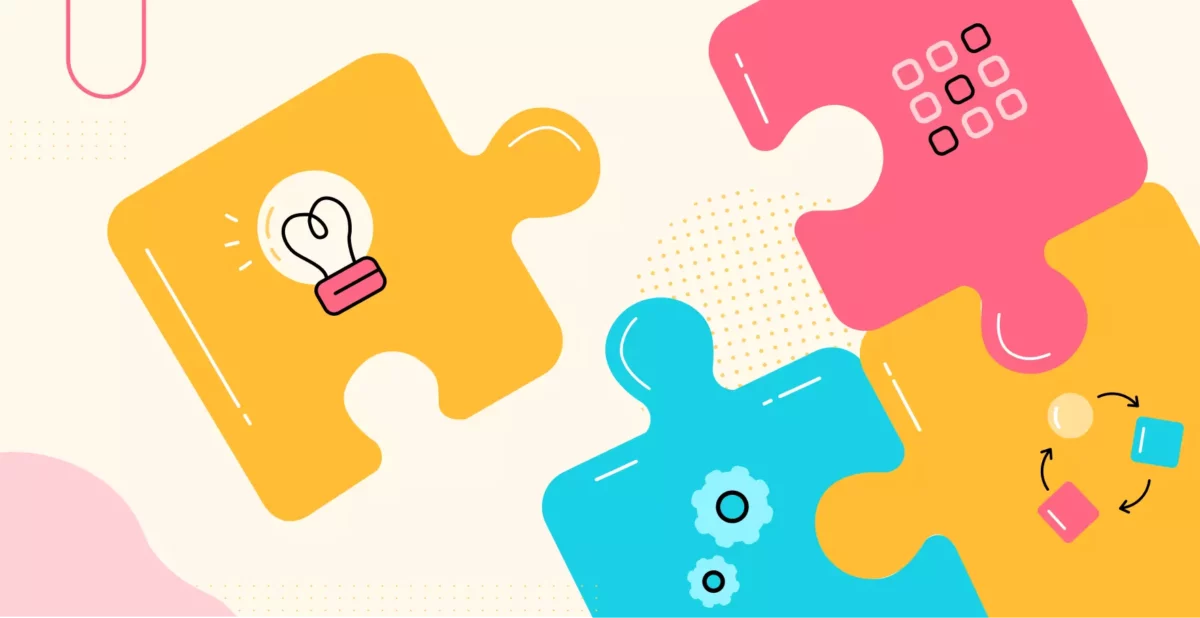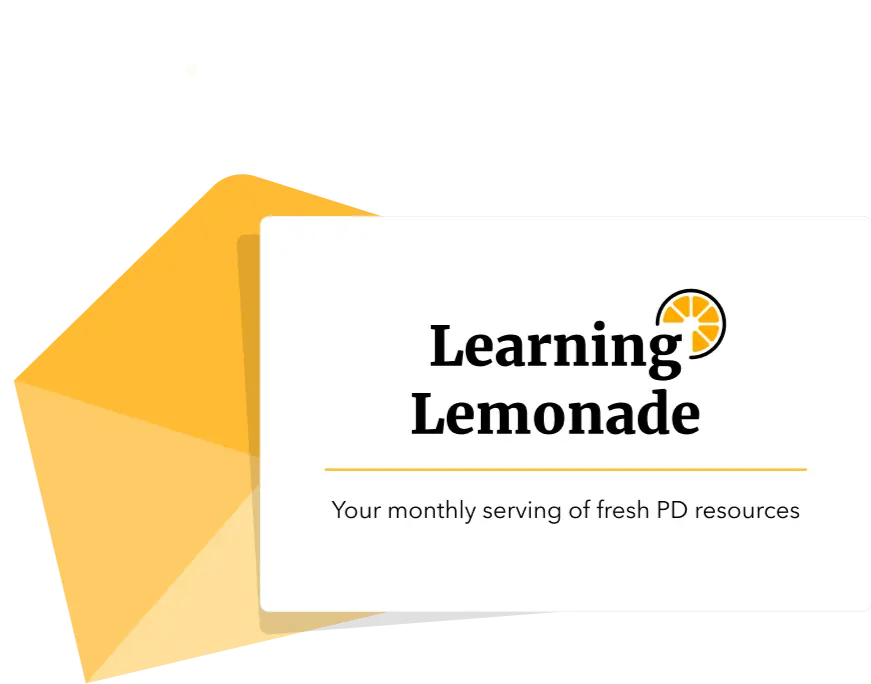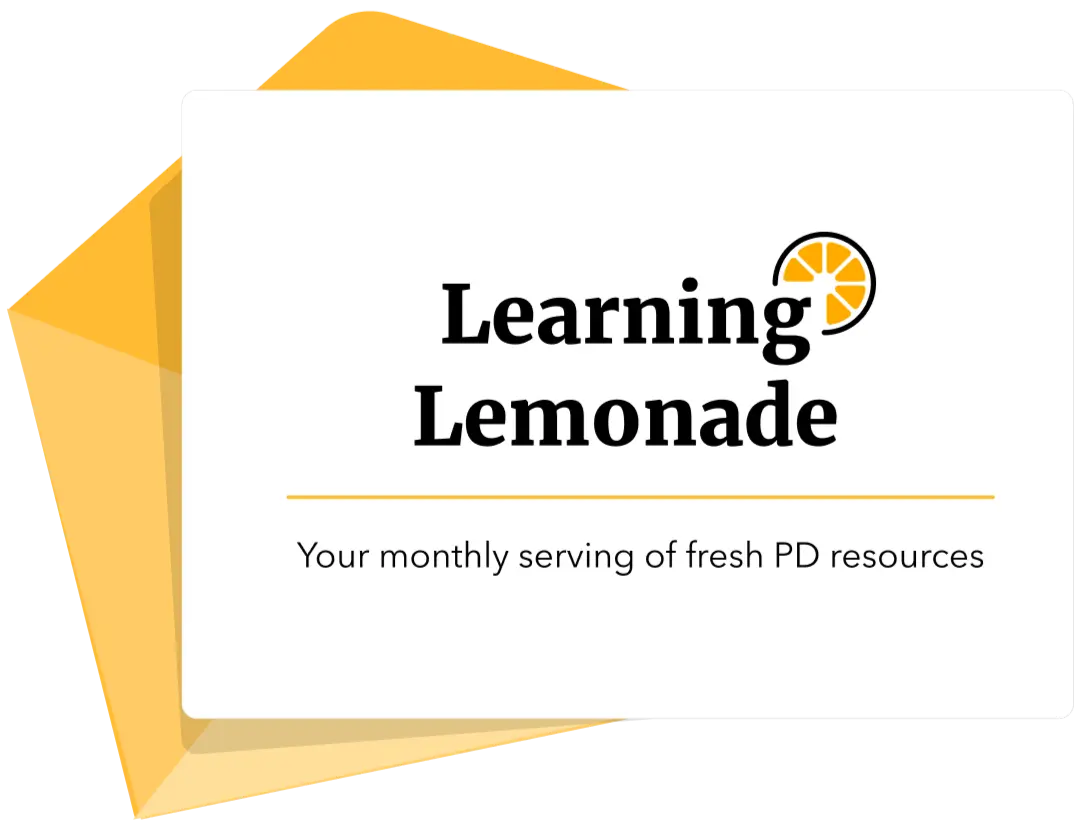Planning an IB PYP Unit of Inquiry in the Upper Primary
Throughout my nearly 20 years in the PYP, I’ve learned to be fairly comfortable with cognitive dissonance. According to Saul McLeod in his 2018 Simply Psychology article, Cognitive Dissonance, Leon Festinger discovered the theory and coined the term. “Festinger’s (1957) cognitive dissonance theory suggests that we have an inner drive to hold all our attitudes and behavior in harmony and avoid disharmony (or dissonance).” Whether it has been learning from old souls or young minds, examining the different iterations of Making the PYP Happen or the new From Principles To Practice, or moving beyond my past passion for action to my new love for agency, it seems like I’ve never been free of dissonance on this cognitive and idealistic journey.
A Personal Framework for Curriculum Planning
Recently, this journey has shifted, somewhat, due to my preference for a new planning framework based on the work of Michael Halliday. According to Halliday, children’s language develops through learning language, learning about language and learning through language. These three aspects intersect in any significant language experience. In program documents, the International Baccalaureate suggested that this language model could be applied across subject areas to learn holistically about knowledge, understandings, skills, and dispositions of any subject within various contexts.
This led me to consider the role of apprenticing children, through inquiry, to be young users of these elements in similar ways to adult experts in the field. Children learn to be scientists, historians, authors, and so on. They also learn to be interdisciplinary and transdisciplinary users of these elements as they learn through contexts of inquiry into local and global issues. As a result, my framework to curriculum planning, shared during Toddle’s PYP Boot Camp, allows for learning to be, learning about, and learning through disciplinary, interdisciplinary, and transdisciplinary contexts.

A Little Dissonance
Designing an upper elementary (intermediate) unit for Toddle Community, I was excited at the chance to fully apply my framework to the PYP planning process. I also felt confident that this framework prepared teachers to develop curricular ideas on a PYP planning template. Still yet, this was my first chance in a long time to go through the complete process, so I did worry. That was an interesting feeling because I’ve planned with PYP templates and planning processes for years and I’ve spent the past few years learning more and more about my own framework. As a result, I approached this opportunity with a little hesitation as I tried to integrate these new ideas into my age-old PYP toolkit. I wondered what I would continue to use in that toolkit and what might need to change. I felt dissonance and it wasn’t always comfortable, but I couldn’t pass up this opportunity to try out this integration.
Continuity and Change
I decided to approach the unit, We are Meandering Streams, based primarily on the concepts of continuity and change after reviewing the Next Generation Science Standards for some possible content. I liked the connection that force and balance had to these ideas. My next step was to visualize this through concept-mapping.

After this, I could easily identify additional concepts. I also noticed the importance that balance might play in this unit and how force was key to understanding balance. What I initially lacked was a context, or a “why,” related to this study. Exploring the Indiana Academic Standards for Social Studies, I thought that development would give me an additional conceptual lens and context to begin creating opportunities for transdisciplinary learning. Once I made this connection, then additional ones to literacy and personal, social, and physical education became evident.
In full transparency, I recognize how the absence of any sort of scope and sequence in my unit development may have supported my imagination for what this unit could be. In contrast, I also recognize how much knowledge of these systems I have developed over my career and that these are generally upper elementary concepts in most systems. Nevertheless, I was on my way now.
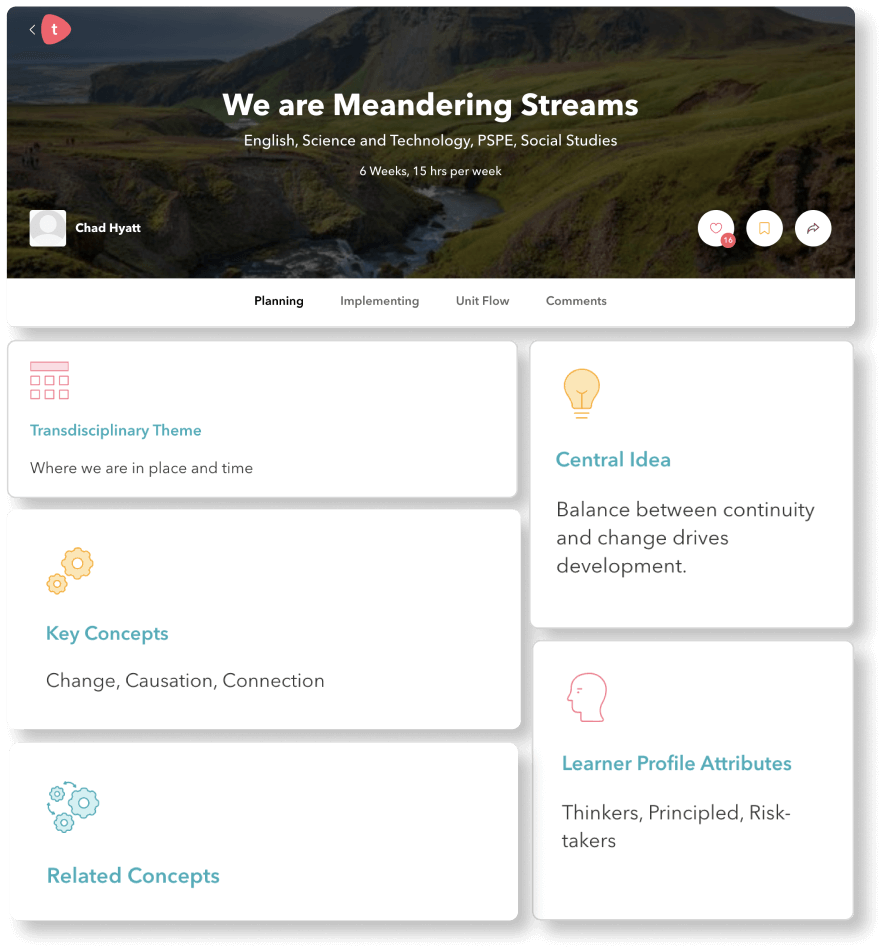
Using the Framework
Yes, now was my moment of action. Can I further develop these ideas using my framework? If so, then can I transfer them easily and meaningfully into the PYP planning process template on the Toddle platform?
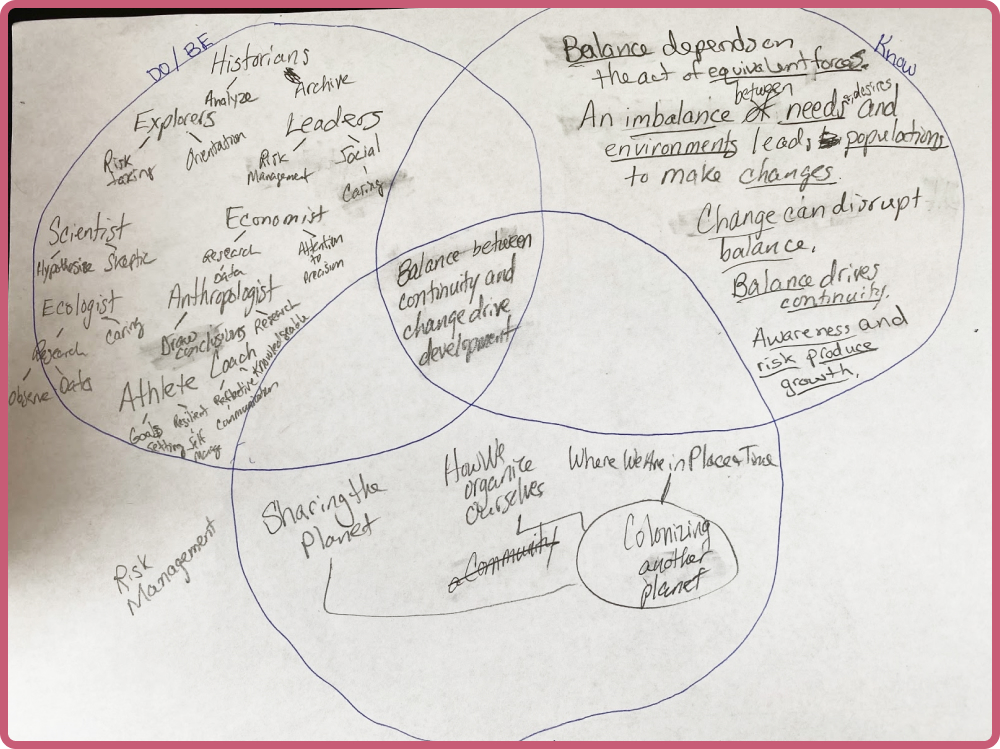
I started with the “Learning about” section since I had many of the concepts mapped out already. As a result, I used my own framework to begin constructing conceptual understandings that identified the relationships between these concepts. As I discovered new relationships and new concepts, I added them. I used Lynn Erickson’s recommendation of six to ten before I moved on to the “Learning through” section. I like going to the “Learning through” section next and ending with the “Learning to be” section because of how it seems more natural to envision a context for learning about these conceptual ideas before identifying the experts and their skills and dispositions. This may be a personal preference and I am not suggesting that there are not other sequences to follow in this process. My final step was creating a potential central idea at the intersection of learning to be, about, and through that allowed me to envision a common thread that would flow through the unit.
Cross-checking
I wanted to do a cross check to see if I could see the integrated links between these sections. I decided to use three colors of highlighters to help me see connections from one section to another. This gave me comfort that the idea of integration was represented from Halliday’s original perspective.

The Evolution of My Thinking
This was my first experience using the Toddle platform. I had admired its sleek appearance and attention to detail to the PYP collaborative planning process. The connectedness of the sections of the planning template and between the work of the teacher with the students and parents influenced my appreciation for what it was able to provide to PYP schools in our global community. Any worries that I held were not with the tool, but whether I could produce the product that I had promised and envisioned.

I was able to move from my framework to the PYP planning template very easily. I consider myself to be very reflective, so I couldn’t help but notice how easily, or not, I was able to move information into each section of the template.
I quickly recorded my concepts, transdisciplinary theme, subjects, central idea, learner profile attributes, and approaches to learning in their appropriate section. I had to pause and think about the best place to record the conceptual understandings and chose to list them as part of the learning goals and success criteria. Toddle made it so easy to continue to approach the planner in a non-linear manner. The linked outline of the planner on the side meant that recording my next thought was only one click away. This was really nice because I tend to bounce around, a lot!
Self-imposed Restrictions
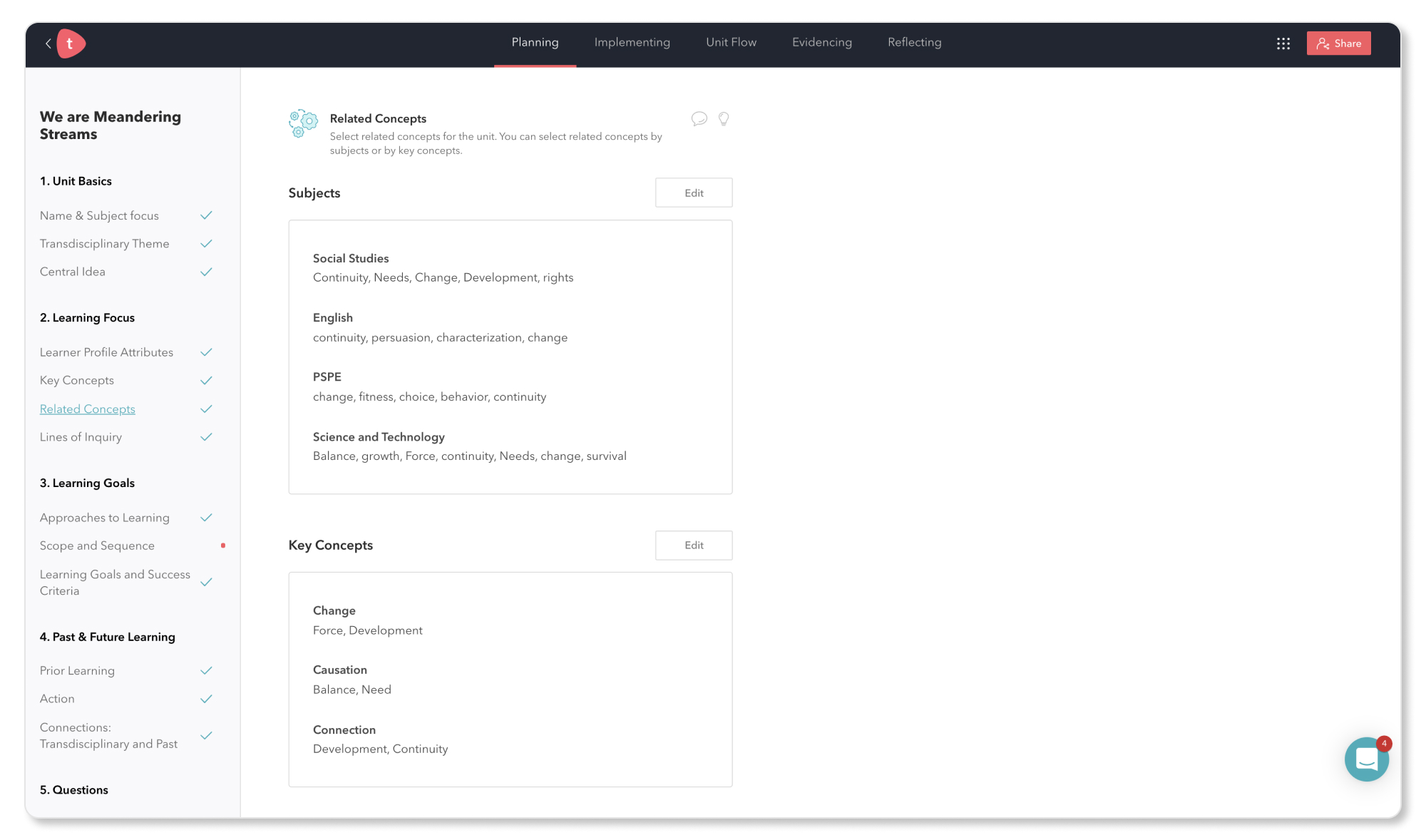
One thing that generated serious reflection was how I was often going against my normal habits and directives to planning. As an instructional coach and former school PYP coordinator, I have given a terabyte of guidance to teachers about how to fill out a unit planner. Interestingly enough, my usual guidance, in regards to lists, is to include no more than two to three. This went out the window real fast. For example, in thinking about the unit’s related concepts, I knew there wasn’t a requirement for the maximum number, like there is for key concepts. I always told people to limit the number of related concepts to promote depth over coverage. However, it is so early in the planning process when we identify them that I needed every one of them to be listed to really imagine all that this unit could be. Any restrictions now could seriously jeopardize what is possible. In reflection, I was in horror over how much angst I may have potentially caused over the years due to my self-imposed restrictions just when teachers’ brains are getting warmed up.

Opportunities for Reflection
I loved how Toddle provided me opportunities to explain my thinking with the “Add reflection” link and the information boxes for the key concepts. In the PYP, I’ve generally relegated reflection to use during and after the teaching of a unit. I thought this feature of Toddle really improved the connections that I could make between elements and promoted depth of thinking.
Purposeful Questions
Over the years, I have developed confidence in crafting teacher questions that will help guide the inquiry. Through my work with the MYP, I’ve come to like their inclusion of creating factual, conceptual, and debatable questions, so I’ve adopted that practice when I build PYP units of inquiry.

Based on what I’ve learned over the years, I derive all of my questions from my concepts and context. I build factual questions based on one concept. I, then, create conceptual questions that focus on the relationship between two or more concepts. These factual and conceptual questions will be instrumental in the planning process as I craft learning experiences that will provide opportunities to explore these questions,

especially throughout the early weeks of the unit. Finally, I design debatable questions that can serve as initial provocations and then be revisited later in the unit of inquiry. For this unit, I introduce each of the debatable questions within the first two weeks and then come back to them at least a few weeks later to see how the unit’s learning experiences have affected the thinking of the children. As teachers, we must be intentional in the unit design process so that we can provide evidence of each child’s ever-evolving thinking and understanding.
Going Solo is Challenging
The final thing that really stood out this time was the essential nature of collaboration to curriculum planning. With my years of experience, I felt comfortable with so many key elements of the PYP planning process. I know that the pre-thinking I was able to accomplish by integrating my framework also supported much of this work. Interestingly enough, the challenge of going solo really hit me when I started to develop the learning experiences. I immediately recognized that in collaborative planning, I’m either that teacher that builds off of the thinking of others or puts out the initial idea for others to further develop. It seemed nearly impossible to do both. I also pride myself in being the type of teacher that can collaboratively develop or negotiate learning experiences with students. Being solo, I hit numerous road blocks. I couldn’t continue in this manner, so I had to reach out to my friends and colleagues.
First, I called a PYP coordinator in my district, Mrs. Anat Pinsky. She provided me with a choice board that she recently developed for her 5th grade teachers. Next, I contacted an educator friend in Texas. Mrs. Natalie Dhanoolal Rubio loves teaching and learning about Science, so I knew that she was the right person for me to talk to about a unit that evolved from scientific concepts. She helped me go deeper with the “Leave or Stay” problem-based learning scenarios. After hitting my initial roadblocks and experiencing the liberating power of collaborating with others, I’m not sure how teachers in small schools do it when they are the only teacher in a grade level. It must be so challenging!
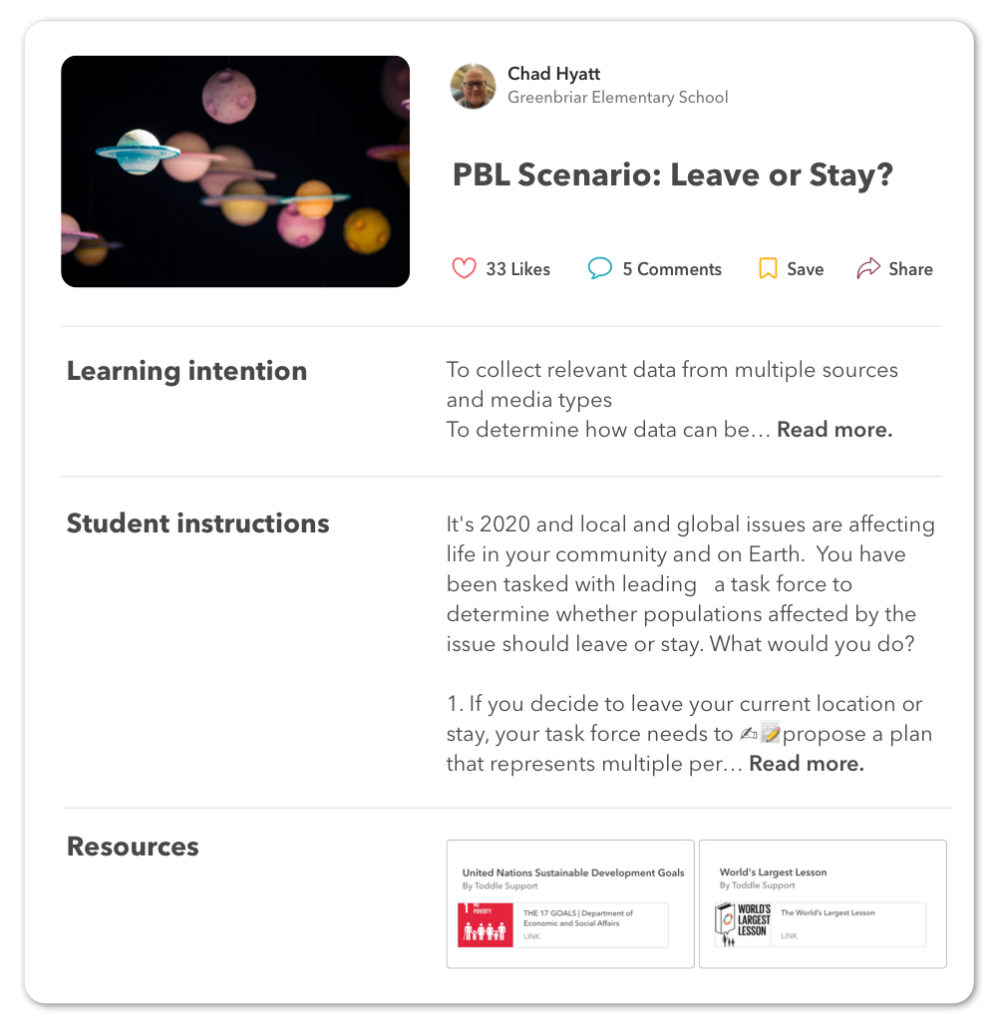
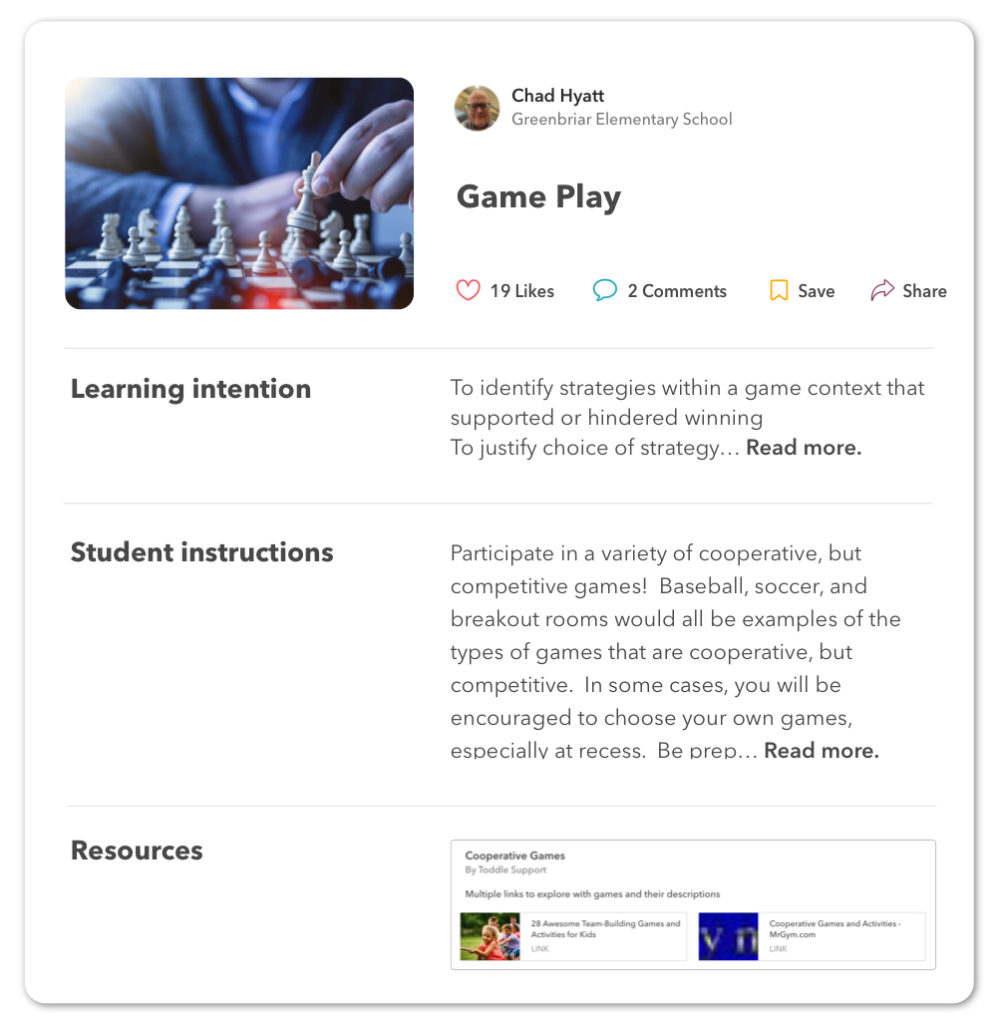

Final Thoughts
I was surprised at how much continuity and change became a part of this unit and its development process. I feel like I have created a product that is meaningful and I am hopeful that others find it to be a resource worth using. To anyone using the ‘We are Meandering Streams’ unit on Community, please adapt it and make it your own. Although I know it will be a helpful starting point to many, please know that no one can create a unit that can be relevant in all contexts. Use the power of collaboration with your teachers and students to design something a bit more perfect for your school.
Catch the complete recording of Chad’s Toddle Talks webinar here.
Sources
McLeod, S. A. (2018, February 05). Cognitive dissonance. Simply Psychology. https://www.simplypsychology.org/cognitive-dissonance.html
Halliday, M. 1985. Three aspects of children’s language development: Learning language, learning through language, learning about language. Sydney, NSW, Australia. University of Sydney, Department of Linguistics. Unpublished manuscript.IBO. 2009.
Making the PYP happen: A curriculum framework for international primary education. Cardiff, Wales. International Baccalaureate Organization. P.14.



